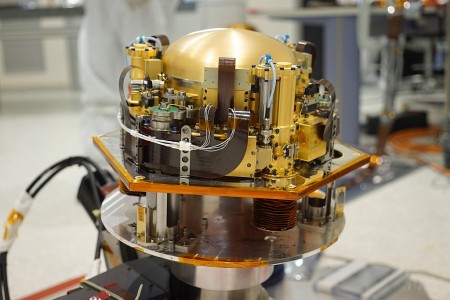On November 26th, the Insight mission celebrated the first anniversary of the landing of its Martian module. Co-created by the CNES, NASA and the DLR, its main goal is to study the inner structure of the red planet.
Nov. 19 - Insight celebrates the anniversary of its landing on Mars with more than 300 earthquakes recorded by SEIS


Insight’s first measures and suprises
It was after its 100th day of activity that SEIS, the seismometer developed by CNES, recorded seismic activity whereas previous missions failed to. The FLUXGATE magnetometer shows a Martian magnetic field of 2000 nanotesla at gound level which is 10 times higher than the satellite forecasts. These data as well as those provided by the HP3 heat flux sensor and the APSS weather station are still under study to learn more about the red planet.
EREMS contribution to the seismometer’s state-of-the-art electronics
EREMS was involved in the development of some of the SEIS seismeter electronics. EREMS’ teams worked specifically on the electronics managing the counter-reaction and the VBB pendulum. The main constraint was to acquire the seismometer signals with a excessively low level of electronic noise in order to detect the smallest earthquakes.
Data which has not revealed their secrets yet
No less than 300 earthquakes have been recorded by the Insight module since it was activated on Martian ground; an exceptional result that astonishes researchers and counterbalances all the more with the series of malfunctions that the HP3 thermal probe passes through. Even if the instrument’s drill was able to get away from a delicate situation last October, little data has been collected so far. While waiting for other data and their analysis, the NASA website propose to while away the time by discovering the daily weather on the surface of Mars.
